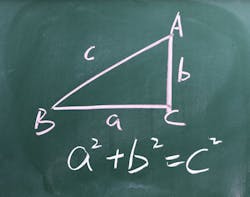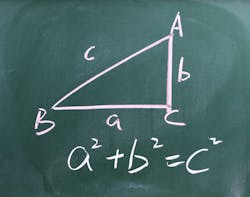We’ll begin by covering some of the basic mathematical relationships that everyone learns in electrical trade (or engineering) school.
Unfortunately, many people seem to forget these basics in the real world. Probably, you can solve example problems if someone were to give you a test. But what do these basics mean on the job?
For example, there’s an easy way you can prove that electricity does not take the path of least resistance. You can prove that using the same equations you learned in the first few days of electrical school. Yet many presumably qualified electrical workers agree with the idea that electricity takes the path of least resistance.
Don’t think of these equations as basic because they are easy (relative to, say, a Fourier Transformation). Think of them as basic because they form the basis of how electrical quantities relate to each other.
Let’s consider a troubleshooting situation. A motor runs hot. Everything points to voltage imbalance as the culprit, but at the MCC the phases are within half a percent of each other.
If only you had an AC resistance meter with you..Then, you could impedance-test each phase of the circuit between the MCC and the motor’s weatherhead. Any phase that shows more than a few ohms (or has much higher impedance than the other two) probably has a bad connection. If the impedance stays low, the problem isn’t in this part of the circuit.
You do have a DMM with a current clamp. The battery of your DMM is only 9V, so your DMM can’t tell you the impedance that exists at nominal voltage. Or can it?
It is certainly more efficient to use an AC resistance tester, as just described. But it’s a long walk back to the shop.
Using your DMM and current clamp, you can measure voltage and current on each phase at the MCC and again at the weatherhead (or at the motor starter if you don’t want to disconnect there). At this point, you could apply Ohm’s Law to calculate the impedance at each location. Any phase with a bad connection (if there is one) will show markedly increased impedance.
You can remember the formula for DC resistance; it’s just voltage divided by current. But can you remember the variation for calculating impedance in an AC circuit? Fortunately, you don’t have to. Because you understand the relationship between these three quantities, you can spot the high impedance phase (or lack thereof) by looking for a significant increase in voltage or decrease in current (or, really, just a big change in either one). You don’t need an exact number to detect a high impedance in that part of the circuit.
About the Author

Mark Lamendola
Mark is an expert in maintenance management, having racked up an impressive track record during his time working in the field. He also has extensive knowledge of, and practical expertise with, the National Electrical Code (NEC). Through his consulting business, he provides articles and training materials on electrical topics, specializing in making difficult subjects easy to understand and focusing on the practical aspects of electrical work.
Prior to starting his own business, Mark served as the Technical Editor on EC&M for six years, worked three years in nuclear maintenance, six years as a contract project engineer/project manager, three years as a systems engineer, and three years in plant maintenance management.
Mark earned an AAS degree from Rock Valley College, a BSEET from Columbia Pacific University, and an MBA from Lake Erie College. He’s also completed several related certifications over the years and even was formerly licensed as a Master Electrician. He is a Senior Member of the IEEE and past Chairman of the Kansas City Chapters of both the IEEE and the IEEE Computer Society. Mark also served as the program director for, a board member of, and webmaster of, the Midwest Chapter of the 7x24 Exchange. He has also held memberships with the following organizations: NETA, NFPA, International Association of Webmasters, and Institute of Certified Professional Managers.

